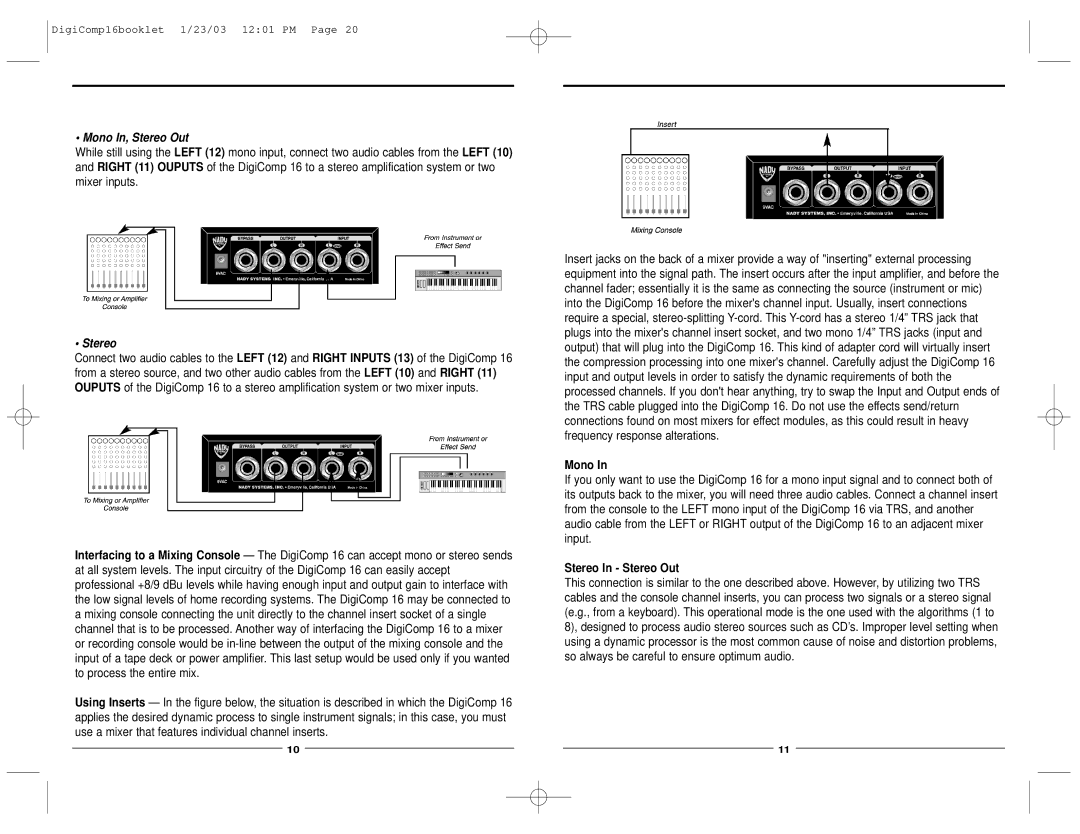dig comp 16 specifications
Nady Systems has long been recognized for its commitment to innovation in the field of wireless audio technology. Among its range of products, the dig comp 16 stands out as a sophisticated digital compressor that caters to musicians, sound engineers, and audio professionals seeking high-quality audio processing tools. This device integrates advanced technologies to provide superior sound control and dynamic processing.One of the dig comp 16's main features is its 16 presets, which offer a wide variety of compression settings tailored to different instruments and vocal performances. This versatility enables users to select the ideal settings for any application, whether in the studio or during live performances. Each preset has been meticulously crafted to suit genres ranging from rock to jazz, ensuring that users can achieve their desired sound quickly and efficiently.
The dig comp 16 is equipped with an intuitive user interface, making it accessible for both beginners and seasoned professionals. The large LCD display clearly shows the chosen preset, gain reduction, threshold, attack, and release settings, allowing users to monitor their adjustments in real time. The control layout is designed for straightforward navigation, enabling quick tweaks without interrupting the flow of a live performance or studio session.
Incorporating advanced digital signal processing technologies, the dig comp 16 delivers high fidelity sound without introducing unwanted artifacts. Its low noise floor and high dynamic range make it suitable for a wide range of audio sources, preserving the integrity of recordings while providing the necessary dynamic control. The device also features adjustable parameters for fine-tuning the output, including ratio and makeup gain, allowing users to customize their sound to perfection.
Another notable characteristic of the dig comp 16 is its durability and robust build quality. Constructed with high-quality materials, the device is designed to withstand the rigors of frequent use in professional environments. This reliability ensures that the dig comp 16 is a trusted partner for audio engineers on tour or in the studio.
Overall, the Nady Systems dig comp 16 is a powerful tool for those in the audio field. Its combination of user-friendly features, advanced processing capabilities, and build quality makes it an excellent choice for achieving optimal sound control in various audio applications. Whether you're a seasoned professional or a hobbyist, the dig comp 16 promises to elevate your audio experience and help you craft the perfect mix.

